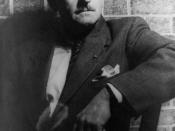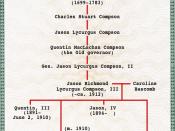Faulkner and McCullers
Jeremy Bentham and John Stuart Mill once had an idea to take something as complicated as ethics and apply a Hedonistic calculus as their method to determine right from wrong. They would ultimately base this determination on a measured degree of pleasure versus pain received from any action. Though a complicated theory, the simple matter that it rested on a complex series of formulas and calculations to determine the greatest good, proved little more than the simple fact that human nature, and human beings in general, cannot be defined by any hard and fast laws. This being said, the American Heritage Dictionary of the English Language defines stereotype as a "conventional, formulaic, and oversimplified conception, opinion or image," which might help one to understand the problems that being labeled can create. In fact, the idea of the "mammy" has existed for some time; institutionalized in America through many authors, advertisements and ignorant people who have repeatedly utilized this image for profit or power in many forms.
It can be seen that William Faulkner, in The Sound and the Fury, created Dilsey as perhaps the only major character to weather the storm that is the Compsons and along the way she would require many traits that are quite atypical for a mammy. In much the same manner as Faulkner, Carson McCullers in her The Member of the Wedding, has developed a powerful persona in Berenice. Though she appears to mimic the part of mammy, Berenice, as both the proverbial devil and angel on Frankie's shoulder, contributes sage advice mixed with troubled experience. Though both Dilsey and Berenice are often said to be molded in the "mammy" design, both have characteristics that cross the boundaries typically set by the institutionalized mammy myth. Also, it would seem that though both...


